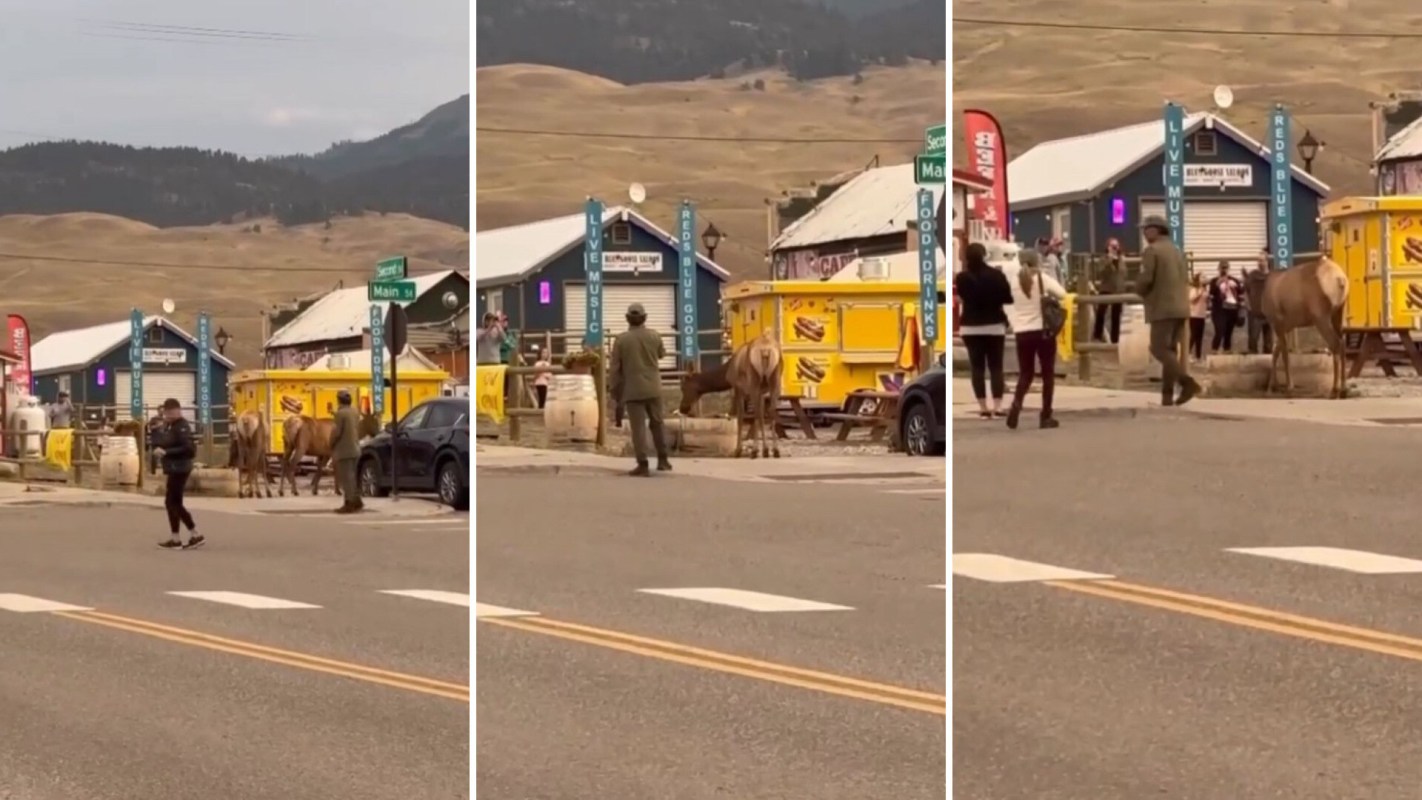In what is now an all-too-familiar scene, a recent video showcased "tourons" — the tongue-in-cheek nickname combining "tourists" and "morons" — getting dangerously close to some elk near Yellowstone National Park.
In the Instagram video, numerous people crowd around two elk who had wandered into the town of Gardiner outside the park's northern entrance.
As the elk sniffs the ground outside a restaurant, one man films them with his cell phone mere feet away. The account that posted the video, TouronsOfYellowstone (@touronsofyellowstone), captioned it with several hashtags, including #Keep25YardsFromElk and #KnowingTheParkRulesIsYourResponsibility.
"Literally, this makes me feel sick to my stomach," one person commented.
They're rightfully concerned. Close-quarter animal encounters like this are distracting, and they interrupt and limit the connection with nature that other visitors can have.
They're stressful to observe for bystanders — many of whom may have specifically chosen this type of trip due to the ability to make it eco-friendly — and park rangers, who protect both the park's animal inhabitants and its human visitors.
Most importantly, they can be very dangerous for everyone involved. "Surrounding them against a building is an IQ test-fail," another person commented. "Cows [female elk] strike with their front feet and even wolves don't take on healthy ones."
But the primary danger isn't towards humans — it's towards the animals.
Whether provoked or unprovoked, animals that attack humans are typically euthanized. Yet people continue to put wildlife at risk; this isn't the first time that so-called tourons have posed a danger to animals, such as elk and bison.
Being a good steward of nature means knowing how to interact with it and when to let it be. The national parks were created to help people engage with and protect the wilderness, not abuse or endanger it.
Other organizations, like the Fish and Wildlife Service, offer educational programs in a variety of subjects to help educate the public on respectful ways to coexist with wildlife. And some places, like one beach in Australia, are even using drones to monitor animals and prevent unwanted interactions with humans.
Generally, the farther tourists stay away from the wildlife — no matter how tempting it is to get an up-close look — the safer and more enjoyable the experience will be for everyone.
As for the tourons in question, commenters had plenty to say.
"That's crazy!!" wrote one.
"And that my friends will get you hurt!" said another.
Join our free newsletter for cool news and cool tips that make it easy to help yourself while helping the planet.









